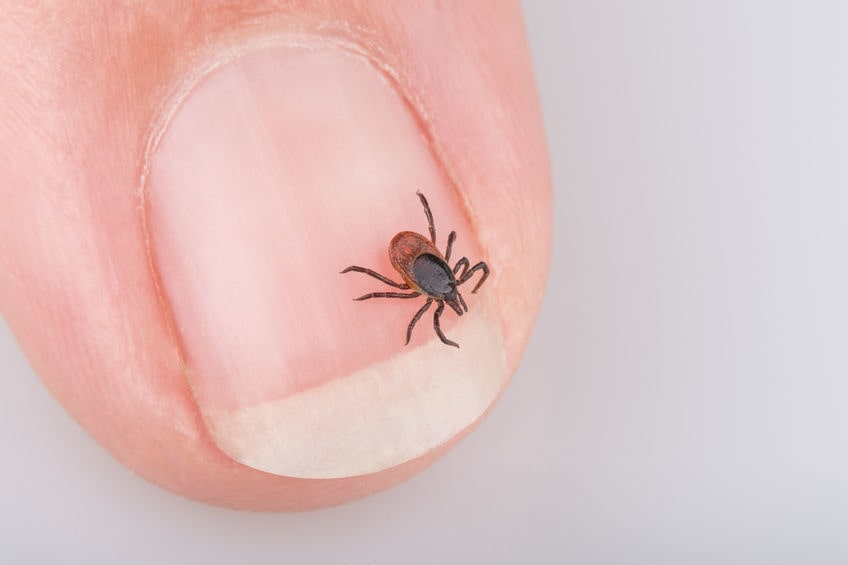Lyme Disease: The Great Pretender


Did you know that I grew up in Connecticut? Besides being one of the most difficult states for a child to learn to spell . . . and I remember it being a struggle . . . Connecticut is home to the discovery of Lyme Disease. During my clinical studies, I worked with some amazing doctors and saw tons of patients with this debilitating disease. Very similar to my experience trying to spell Connecticut . . . . every time it came out different . . . . Lyme disease looks different all the time. That’s why we call it the great pretender!
What is Lyme Disease?
Lyme is primarily transmitted by the spirochete Borrelia burgdorferi. This black-legged little bugger also known as the deer tick carries the infection that causes Lyme Disease. It is often hard to even find them on your body, The tick is about the size of a pin. They bite you, essentially spit the infection into your body. Most people are not aware they have been bitten. These tiny ticks are typically found in wooded and grassy areas. Rainy season seems to bring them out.
Where is Lyme Disease Found?
Lyme disease is found throughout the United States, as well as in more than six countries. A recent CDC (Center for Disease Control) study found that cases of Lyme disease increased more than 80% between 2004 and 2016. These numbers are based on reported cases only. The CDC estimates more than 300,000 cases of Lyme infection in the United States each year. That’s a lot of people.
FYI Lyme has stages and at each stage the symptoms are different. Chronic vs Acute, some cases are more neurological, some are more inflammatory. That is why we call this the great pretender!
Here is the short version of the list of Symptoms:
Early Lyme:
- Bullseye rash
- Fever with or without chills
- Fatigue
- Body Aches
- Headaches with neck stiffness
- Swollen lymph nodes
Untreated Late or Chronic Stages of Lyme Disease:
- Severe stiffness of the neck and headaches
- Arthritic pain with joint swelling – the knees are commonplace and sometimes just one side will swell – then the other (monoarthritis of Lyme
- Loss of muscle tone in the face (Facial Palsy) one or both sides can drop
- The pain of the tendons and muscles all over the body that comes and goes
- Dizziness and heart palpitations
- Irregular heartbeat (you can even develop Lyme Carditis)
- Nerve pain – shooting pains, numbness, tingling
- Memory changes
As you can see the list is long!
5 Myths About Lyme Disease
- California has no Lyme Disease. WRONG!. This is simply not true. Lyme disease has been identified in every state and a recent study showed that ticks carrying Borrelia burgdorferi are widespread in the San Francisco Bay area year round.
- The second myth is about antibiotics and how it cures everyone. While more than 300,000 people are diagnosed every year with Lyme disease, statistics show as many as 20% percent of patients continue to exhibit symptoms even after antibiotic treatment.
- Only woodsy hippies get Lyme Disease from Ticks . . . ooh no, here is one that blow’s your mind. Even in urban areas, we are seeing more Lyme Disease
- The third myth about Lyme disease is that everyone gets a “Bull’s eye” rash. While many associate this type of rash with Lyme disease, the CDC estimate that only 70 percent of people who contract Lyme will present with this type of rash.
- The last myth is about testing. Many people believe if the test is negative you don’t have Lyme disease. Unfortunately, this is not the case. The current gold standard diagnostic testing for Lyme disease is a two-tiered blood test requiring a positive ELISA result. The ELISA test measures infection-fighting or memory antibodies against Borrelia Burgdorferi and it misses up to 60% percent of acute cases.
Testing and treating the right way can help you get back to your life. If your system feels off – consider Lyme Disease as the underlying cause.
Remember that there is no ‘one solution fits all’; each individual has varying health issues and lifestyles and may need different types of treatment. Get a plan that fits you!
